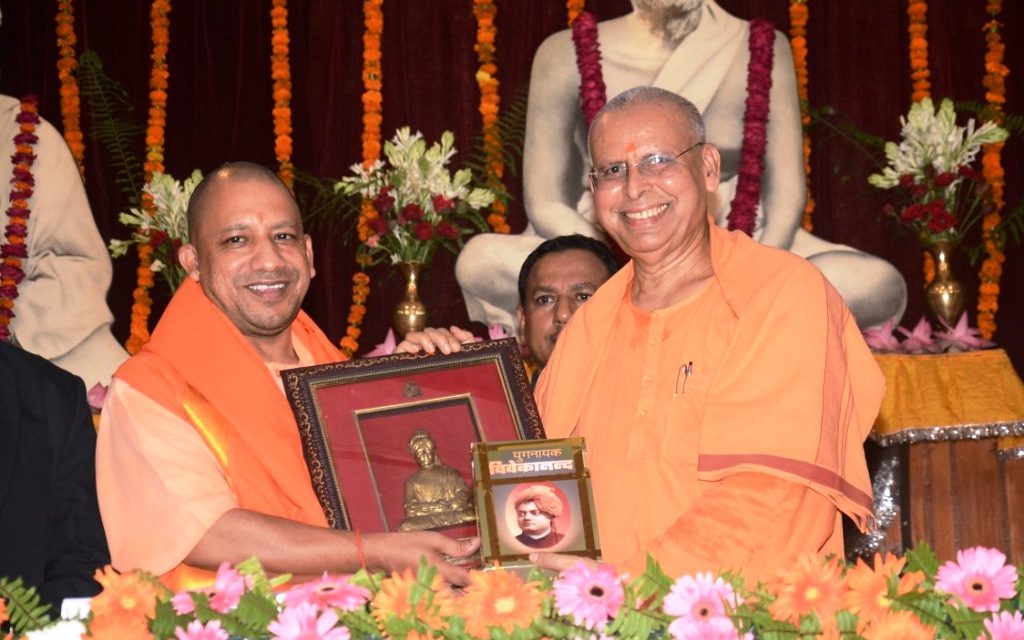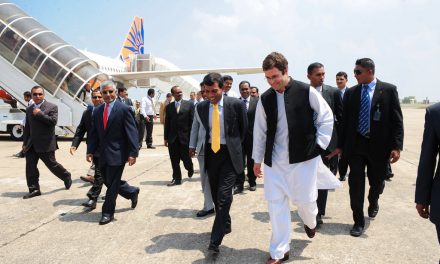Uttar Pradesh lies on the hallowed grounds that saw the rise and fall of various important chapters in Indian history. Modern India has seen a flux of political entities, leaders, trends and issues in Uttar Pradesh over the years. Pandit Govind Ballabh Pant, leader of the Congress Party, was the first Chief Minister to lead an elected Assembly in Uttar Pradesh in 1951, followed by Sampurnananda, Chandra Bhanu Gupta and Sucheta Kripalani. Supported by Ram Manohar Lohia and Raj Narain, and Jana Sangh’s Nanaji Deshmukh, Chaudhary Charan Singh formed the first non-Congress government in 1967, leading the Samyukta Vidhayak Dal (SVD), a coalition that had parties as disparate as the Communist Party of India (Marxist) and Bharatiya Jana Sangha (BJS), along with the Swatantra Party, Republican Party of India and Praja Socialist Party. The next few decades saw a Congress resurgence (which also had six Chief Ministers from 1980 to 1988!) followed by the Janata Party experiment. In 1991, the politics around Mandir and Mandal (Commission) saw the tussle between two OBC heavyweights: Mulayam (Singh Yadav) vs Kalyan (Singh), while the first Dalit-OBC coalition took power in UP in 1993, with Mulayam Singh Yadav and Mayawati allying to form the government. The latter would go on to become the first Dalit Chief Minister to be sworn in, in 1995. The next couple of decades saw the rise and fall of governments by Kalyan Singh (BJP), Ram Prakash Gupta (BJP), Rajnath Singh (BJP), Mayawati (BSP), Mulayam Singh Yadav (SP) and Akhilesh Yadav (SP).
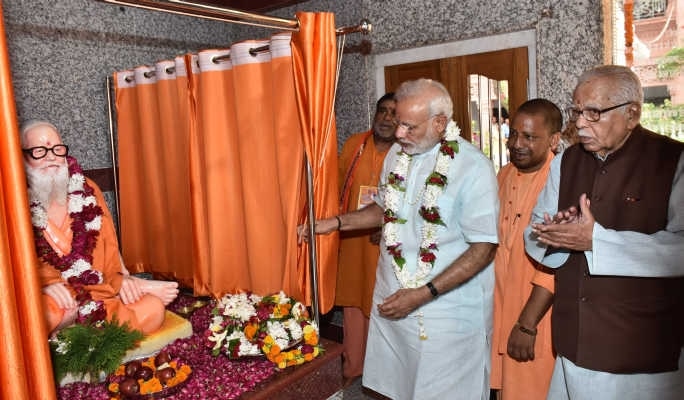
Prime Minister Narendra Modi’s charisma, BJP’s caste arithmetic of wooing non-Jatavs, non-Yadav OBCs and upper castes, along with the reverse polarisation of Hindu votes due to the excessive wooing of Muslim voters by SP and BSP, smart and aggressive social media campaigning by the BJP, infighting in the Samajwadi fold and a divided opposition helped the Bharatiya Janata Party to seize power in 2017. In a rather surprising move, instead of going for state bigwigs like Rajnath Singh, Uma Bharti or Keshav Prasad Maurya, the BJP opted for Yogi Adityanath, the politically powerful Sanyasi from Gorakhpur in eastern Uttar Pradesh, as its Chief Minister. Yogi was a popular face who had been Member of Parliament from Gorakhpur for five consecutive terms. A disciple of Mahant Avaidyanath who was himself a disciple of Mahant Digvijay Nath, he followed his Guru and Guru’s Guru in taking up the mantle of the Gorakhnath Math as well as pursuing an assertive Hindu brand of politics from Gorakhpur. He was controversial in certain sections of the populace and media, with Amnesty International even saying that “Adityanath has been one of Uttar Pradesh’s most polarising politicians.” However, many people across the state also felt that if there was anyone who could bring the complete disarray of UP under the SP’s Yadav factions, it had to be the Mahant from Gorakhpur. As we move towards the upcoming state election in Uttar Pradesh, let us look back at the last five years and see how the Yogi government has fared in Uttar Pradesh.
Gundaraj No More
Crime is one of the most debilitating factors that has hindered the growth and development of Uttar Pradesh over the decades. As per the data released by the National Crime Records Bureau (NCRB) in late March of 2021, the crime situation has considerably improved in the state. Uttar Pradesh has seen a reduction of rape cases from 59,445 in 2018 to 49,385 in 2020, with a chargesheeting rate of 77.1% in 2020, as well as among the highest conviction rate of such crimes today. This has been due to proactive steps taken by the Yogi government, which include women helpdesks, night security cover scheme, UP-122 India App, anti-Romeo squads and pink booths. The state has also seen a sharp fall in instances of murder and cyber-crime. The NCRB has shared that the state government has also recorded a high rate of charge sheeting at 49.9% for cyber-crimes, although the number of cases have increased from 6,280 in 2018 to 11,097 in 2020. Police disposal of IPC crime cases has been positive with 2,81,162 cases charge-sheeted in all (with a charge sheeting range of about 77%) and 3,65,628 cases disposed of, in 2020. Uttar Pradesh has seen a dramatic decline of almost 20% from the year 2016 to 2020, in cases of murder. 3,904 arms were seized from anti-national elements in 2020. There were about 1.6 murder cases per 1 lakh population in 2020. As per the NCRB data, the state went from 65,155 cases of violent crimes in 2018 to 51,983 in 2020. While rate of total crime against individuals belonging to Scheduled Castes (SCs) has been 30.7% in 2020, the charge sheeting has been proactive with a rate of charge sheeting of 84.3% in 2020.

The government has prioritised stringent law enforcement (with 75 police districts and 75 AHT units in 2020) and undertaken legal, administrative and awareness-building activities to reduce crime in the state. One of the major positive turns in the manner in which the state government has handled police functioning is the transparency in postings and the establishment of stable tenures for personnel. Earlier Gundas and Bahubalis (strongmen) ran riot across Uttar Pradesh and while they still remain a menace, some drastic steps have helped in reducing their influence. In August 2020, the number of people who were booked under the National Security Act (NSA) was the highest in 4 years. Corruption has also been dealt with, with a strong hand, with 105 cases charge sheeted in 2020 by the Anti‐Corruption Bureau, Vigilance and Lokayukta under Prevention of Corruption Act, 1988 and related sections of IPC. This is even as the number of corruption cases reported rose briefly from 84 in 2018 to 134 in 2019, before decreasing to 62 in 2020. Recently, Chief Minister Yogi Adityanath said that the state administration had attached properties of criminals worth over ₹1,800 crore demolished illegal encroachments. There has been relentless crackdown on certain infamous gangster-politicians of Uttar Pradesh such as Mukhtar Ansari (Bahujan Samaj Party) and Atiq Ahmed (Samajwadi Party). As per police reports, around 90 of Atiq Ahmed’s gang members have been arrested and properties connected to him worth ₹325 crores have been seized and frozen. while 244 members of Ansari’s gang have been acted against and properties worth ₹194 crores have been seized. In this way, the entire ecosystem around these gangster-politicians has been dismantled, thereby disabling them and removing the possibility of them operating their extortion rackets and other criminal syndicates.
Business, Economy and Employment
Uttar Pradesh suffered from various systemic problems, including misgovernance and corruption (with the Comptroller and Auditor General of India saying that the Akhilesh Yadav government allowed irregularities worth ₹97,000 crores under various departments between 2014 and 2017), which led to the state suffering from a lack of industrial and business contributions and investments thriving in the state. It was in the 14th position in the nationwide `Ease of Doing Business’ ranking. Today it is second in the rankings and third in the list of states with the highest Gross Domestic State Product (GSDP), as per the Ministry of Statistics and Programme Implementation (Government of India), with a nominal GDP of ₹17.05 lakh crore.
What led to this transformation?
In the past few years, the state government has taken a number of policy decisions to attract investment to the state, primary among which is to create an investor-friendly environment. This is closely tied to the clampdown on law and order problems in the state. In 2017, there was a consultation with various investor-friendly states like Gujarat and Karnataka to create a coherent policy on business, followed by various sector-specific policies.
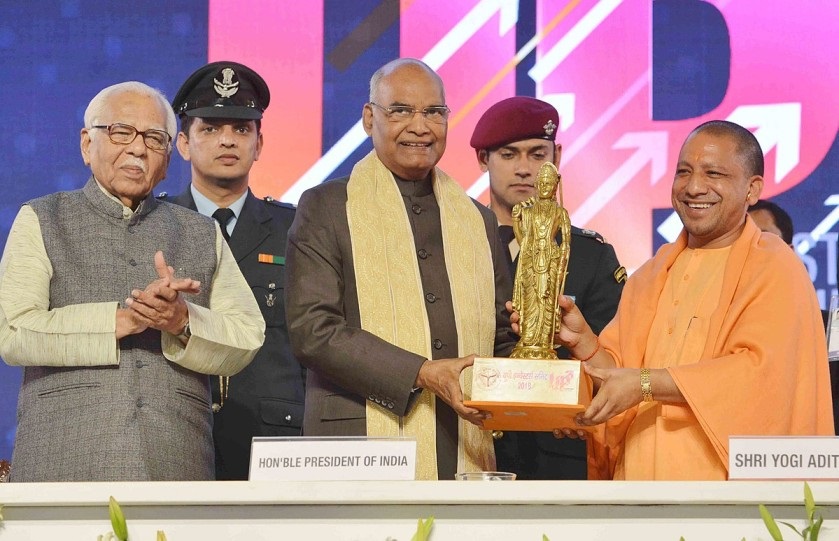
An Investors’ Summit in UP also helped boost this drive significantly. Over ₹17.05 lakh crore has been brought into the state as an investment over the last 4.5 years, with half of the same said to have materialised while the rest remains under process. Companies like Microsoft, Britannia, Brahmos, Bharat Dynamics Limited, AB Mauri and Samsung have established bases across Uttar Pradesh, from Chitrakoot and Lucknow to Jhansi and Noida. When it comes to the MSME sector, Uttar Pradesh has used the interesting One District One Product (ODOP) model under the Yogi government, which describes the model as follows
The UP Government’s One District-One Product Programme aims to encourage such indigenous and specialized products and crafts in UP that are found nowhere else – like the ancient and nutritious ‘Kala Namak’ rice, the rare and intriguing wheat-stalk craft, world-famous chikankari and zari-zardozi work on clothes, and the intricate and stunning horn-bone work that uses the remains of dead animals rather than live ones, a nature-friendly replacement for ivory.
Department of MSME and Export Production, Government of Uttar Pradesh
90 lakh MSMEs are said to have been established in the state, with the generation of 5 lakh self-employment opportunities each year. There is said to be an export of ₹89,000 crores and above from Uttar Pradesh, while the state is nationally placed first in food processing, handicrafts, ready-made garments and carpets. Innovative initiatives like the multimodal logistics hub in Greater Noida will be instrumental in attracting Foreign Direct Investment (FDI).
An Egalitarian Evocation
The growth story of Uttar Pradesh is not one of crony capitalism and isolated development of only specific sections or strata of society. The capital boom has trickled down to every section of the population, either through development policies, direct debit or infrastructure pushes. Housing and welfare have been major points that the government has focussed on. Recently, Yogi Adityanath highlighted that since coming to power in 2017, his government has provided houses to 42 lakh people from economically weaker sections of society. In its last supplementary budget in the Assembly before the 2022 elections, ₹4,000 crores have been allocated for the provision of assistance to labourers of the unorganised sectors. Given the movement of migrant labourers during the COVID lockdown, the government has provided livelihood to 26 lakh labourers in 2021 and also decided to provide ₹500 as a monthly livelihood allowance to more than 3 crore labourers of the unorganised sector, including agricultural labourers, NREGA employees and street vendors. The government has also kept aside ₹670 crores for increasing old-age and farmers’ pension. One of the benefits of having the same party (BJP) in the centre and the state has been the seamless integration of schemes and policy directions, with the state government having successfully implemented 42 central government-run schemes in the state. This particularly includes the central government’s crop insurance scheme – the Pradhan Mantri Fasal Bima Yojana (PMFBY), for which the state government has recently begun a statewide drive since 1 December 2021.
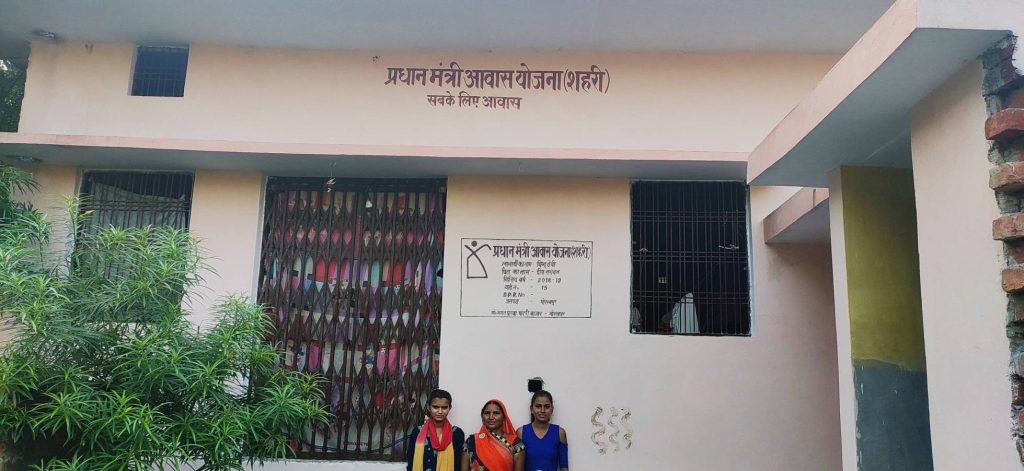
The BJP government in UP has also tried to employ a two-pronged approach comprising of direct debit and employment generation to help citizens avail themselves of greater opportunities and resources. The government is said to have provided more than ₹5 lakh crore to people under the Direct Benefit Transfer (DBT) scheme while around 4.5 lakh youth of the state are said to have been employed in the past 4.5 years. Since the implementation of Kanya Sumangala Yojana on 1 April 2019, almost 11 lakh beneficiaries have received the advantage under this scheme, which envisages payment of ₹15,000 to a girl from the time of her birth up to the point she gets admission to graduation or diploma course. The government has doubled the per capita income of its citizens, from ₹43,000 per year in 2015-2016 to ₹95,000 in 2021.
In Conclusion
The UP government under Yogi Adityanath has reined in criminal elements and gangster-politicians in Uttar Pradesh, besides steering a massive push in investments and growth, which has not only benefitted the few but people from various cross-sections of society, in the state. The government has to look at truly emulating Narendra Modi’s slogan of `sabka saath, sabka vikas‘ – development and welfare without discrimination. We can only hope that it does its best in these last few months of its stint, and its mandate is refreshed by the electorate in the state.
For, indeed, Yogi is Upyogi for Uttar Pradesh and BJP should be able to reclaim its UP-ward move!
Banner: Ramakrishna Mission (on Flickr)

